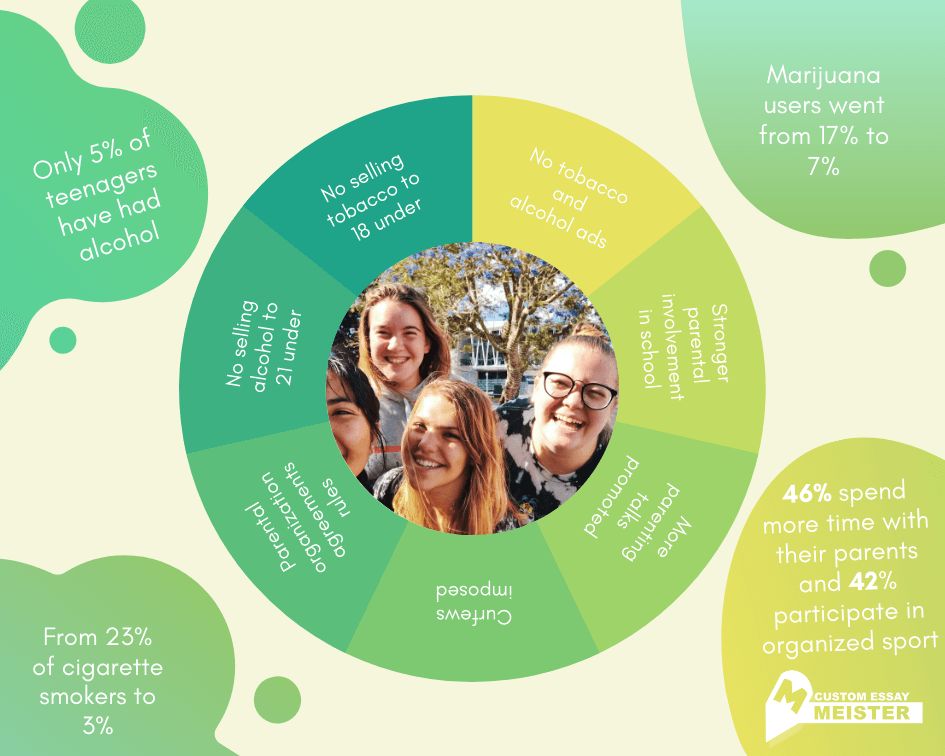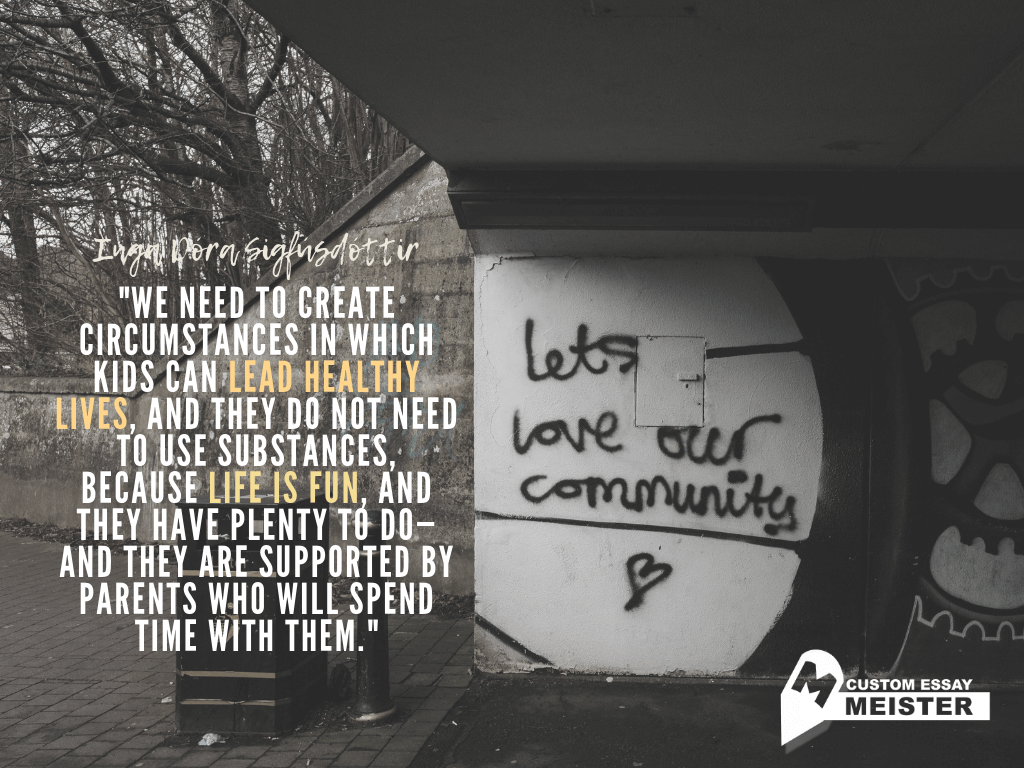Youth In Iceland
Alcohol and substance abuse is a problem faced by almost all countries around the world. Not only has it been around for decades, but it also affects different generations. Truly, anyone can fall into the trap of alcohol and substance abuse. Over the years, countries have dealt with this societal problem in their own ways, most of which include harsher punitive laws. One country, however, stands out among the rest in how it successfully managed its alcohol and substance abuse problem: Iceland.
From the 1990s to the early 21st century, Iceland’s youth were one of the heaviest-drinking in Europe. In 1998, 23% smoked cigarettes, 42% had gotten drunk in the past 30 days, and 17% had used marijuana or some other drug. Additionally, according to another study by Hiball in 1995, 14% of adolescents had had accidents or injuries related to alcohol use. In contrast, the situation in the US in 2017 is perhaps not as bad: 9% of high school students had smoked a cigarette, 30% had gotten drunk 30 days before the survey, 36% had used marijuana, 5% had tried other drugs. Yet about 2.1 million people under 18 are arrested each year in the US. This is despite the long-standing knowledge that incarceration is not an ineffective way to prevent alcohol and substance abuse.
Youth substance abuse
The idea behind Youth In Iceland was developed from the doctoral dissertation of Harvey Milkman, an American Psychology professor who was curious enough to ask why people start using drugs. His study revealed that it was in fact changes to brain chemistry that is addicting to people, and this also influenced the type of drugs or substance that they use. Behavioral addiction, Milkman called it, as people, and adolescents, can get addicted to the sedating effects of alcohol, to the rush of stealing or from stimulant drugs, and even to money, sex, cocaine, and calories. His research findings led to an idea for treatment: offer teenagers an alternative to drugs through activities that give a “natural high.” According to Inga Dóra Sigfúsdóttir who later joined Milkman’s research, the program should not just focus on educating teenagers about drug prevention but also teach them the life skills to apply it to their life.
Insight from Milkman and Sigfúsdóttir’s data revealed that there were stark differences between the lifestyles of teenagers who used alcohol or other substances and those who didn’t. Teenagers who participated in organized activities like sports 3-4 times a week, spent more time with parents every week, felt they were cared about at school, and did not stay out late at night, were less likely to take up smoking, drinking, or drugs.
Youth in Iceland
Youth in Iceland was first implemented in Reykjavik, the capital of Iceland, where the situation was worsening. Following the program's success in the capital, a national plan was introduced.
The following changes were implemented throughout Iceland:
- It became illegal to buy tobacco for people under 18
- It became illegal to buy alcohol for people under 21
- Tobacco and alcohol advertising was banned
- Parental organizations in schools were strengthened
- Parental organizations introduced agreements for parents to sign (e.g. not allowing kids to have unsupervised parties)
- Parenting talks (i.e. about the importance of spending quality time, of talking about their children’s lives and friends) were promoted
- Curfews prohibiting 13- and 16-year-olds from being outside after 10 PM in winter and midnight in the summer.
All these laws are still in effect today, and they have been effective at keeping children safe and healthy. Disciplining teenagers also became much easier since it practically removes the peer pressure factor. After-school activities and staying at home became the norm in place of partying and hanging out on the streets.
However, the star of the Youth in Iceland program, so to speak, is the increased funding allotted for organized sport, music, art, dance, and other activities for kids. After-school activities became more prevalent, and as a result, kids stayed at school learning, training, or practicing in sports or other clubs instead of loitering on the streets and using alcohol, cigarettes, or drugs. More significantly, these activities were made accessible to low-income families through government assistance. In the capital city, for example, a Leisure Card containing 35,000 krona (278 USD) per year per child is provided. It pays for the recreational activities of the children.
Reaping what they have sown
From having one of the heaviest-drinking youth in the 90s, Iceland now has one of the cleanest-living teens in Europe. From the reported 42% teenagers who had gotten drunk, the number went down to 5% in 2016. Those who have used marijuana went from 17% to 7%. Cigarette smoking also went from 23% to 3%.
In addition, surveys in 2012 revealed that 46% of teenagers reported that they “often or almost always” spent time with their parents on weekdays. Likewise, 42% of kids now participate in organized sports at least four times a week. The effects of Youth in Iceland can only be expected to improve the situation in Iceland further.
Perhaps the biggest obstacle for Milkman, Sigfúsdóttir, and their colleagues is showing a concrete causal relationship between these factors. This is probably why the rest of the world is finding out about Youth in Iceland only now.
Cultural Barriers for other countries
Other countries, especially in Europe, have been enticed by the Youth in Iceland model, and had wanted to replicate it in their own cities. Youth in Europe was launched in 2006. A total of 35 cities across 17 countries have participated, however most participated only partially. The Icelandic model was often deemed excessive.
The head of Youth in Europe, Jón Sigfússon, elucidated that cities are expected to create their own strategies based on the team’s findings and recommendations based on the Youth in Iceland model. They only need to follow the basic principle that the youth must be kept busy with productive things to do outside of school to keep them from vices. The consensus is that no countries have the same problems (i.e. Icelandic teens drink for different reasons and in different ways from teens in London), so the preventive strategy should be customized for each.
Take away
The decades-long war on drugs, which is hugely punitive in nature, has proven to be ineffective and even damaging for individuals. Incarceration has been shown to have little impact on repeat offenses or on decreasing substance misuse. Instead, it has been linked to increased mortality from overdose.
If not the Youth in Iceland model, the US, as well as other countries, can at least emulate the attitude that birthed it. In the words of Inga Dóra Sigfúsdóttir, “We learned through the studies that we need to create circumstances in which kids can lead healthy lives, and they do not need to use substances, because life is fun, and they have plenty to do—and they are supported by parents who will spend time with them.”
Custom dissertation writing from CustomEssayMeister
Research like Harvey Milkman and Inga Dóra Sigfúsdóttir's is important in improving society's quality of life. They would not be as successful or well-received if their research were not well-prepared and well-written. Don't waste your brilliant research ideas. Make sure, with the help of CustomEssayMeister, that your ideas are researched and written in high quality.

